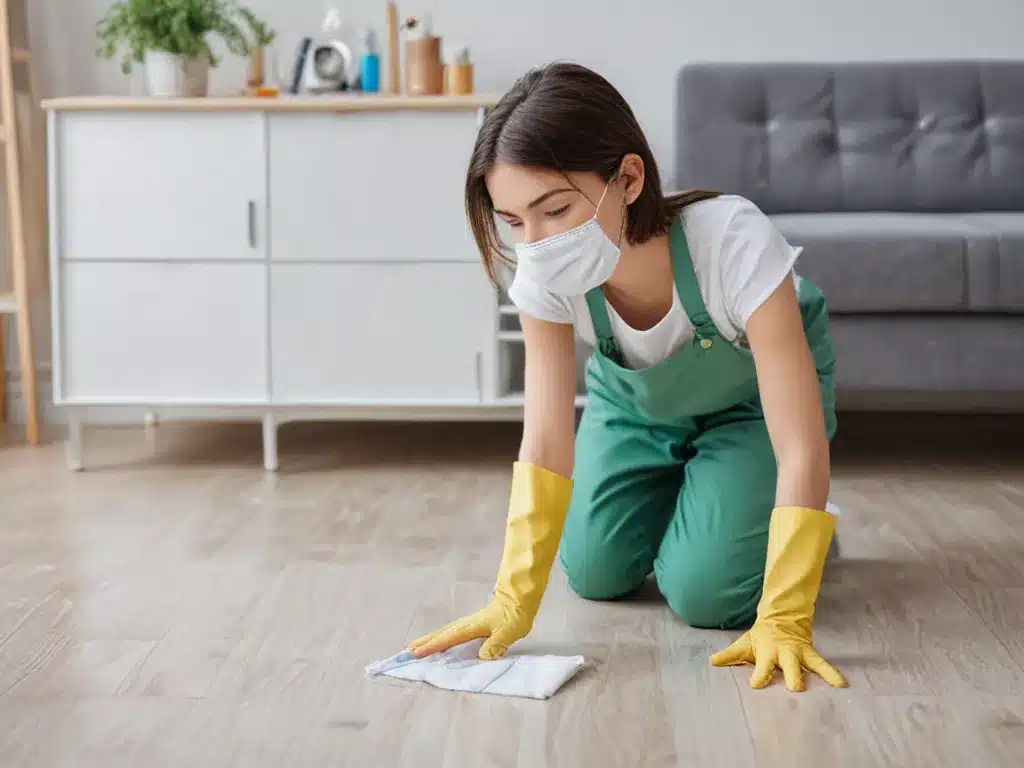Introduction
As someone who wants to keep my home clean and germ-free, I’ve learned a lot about the best practices for sanitizing my house. In this guide, I’ll share everything I know about effectively removing germs and bacteria from the various areas and surfaces in a home.
Understanding Germs and Bacteria
Before diving into sanitization methods, it’s important to understand exactly what germs and bacteria are and how they spread.
What Are Germs and Bacteria?
Germs and bacteria are tiny microorganisms that are present everywhere. While most germs are harmless, some can cause illnesses like the flu, common cold, strep throat, and more serious diseases.
Bacteria are single-celled microorganisms that multiply by cell division and can survive in a variety of environments. Viruses are another type of germ, but they can’t survive without a host.
How Germs and Bacteria Spread
Germs and bacteria typically spread through:
-
Touch – Germs can spread when you touch a contaminated surface or object and then touch your face, food, etc. This is why hand washing is so important.
-
Air – Germs can float through the air in droplets when an infected person coughs, sneezes, or talks. Inhaling these droplets spreads the illness.
-
Contaminated surfaces – Germs can survive on surfaces like doorknobs, faucet handles, and countertops. Touching these surfaces can transfer the germs to your hands and body.
-
Improperly handled food – Bacteria and other germs can multiply quickly on food if it’s not stored, prepared, or cooked properly. Consuming this contaminated food can make you sick.
High-Touch Surfaces
When sanitizing my home, I focus on surfaces that are touched frequently and most likely to harbor germs. These high-touch surfaces include:
- Doorknobs and handles
- Light switches
- Remote controls
- Phones and tablets
- Toilets
- Faucets and sinks
- Countertops
- Tables and chairs
- Appliance handles like the refrigerator and microwave
I make sure to disinfect these areas thoroughly and regularly.
Disinfecting vs Sanitizing vs Cleaning
Before going over the best sanitization methods, it’s helpful to understand the differences between disinfecting, sanitizing, and cleaning:
-
Disinfecting kills nearly all germs and bacteria on surfaces. Disinfectants are the strongest cleaning products.
-
Sanitizing reduces bacteria counts to safer levels but doesn’t necessarily kill all germs. Sanitizers are less harsh than disinfectants.
-
Cleaning removes dirt, stains, and impurities using soap, detergent, or other products. Cleaning doesn’t kill germs but removes them along with dirt.
For optimal sanitization and germ removal, I use a combination of cleaning and disinfecting.
Effective Products and Methods
Here are the best products and techniques I use to sanitize my home:
Disinfectant Sprays and Wipes
-
Bleach solutions – Mixing 1/3 cup bleach per gallon of water makes an effective disinfectant. Rinse surfaces after 10 minutes.
-
Alcohol solutions – Rubbing alcohol and ethanol sprays contain 60-95% alcohol to kill germs. Avoid using on leather, acrylic, or plastic.
-
Hydrogen peroxide solutions – Sold in 3-6% solutions, hydrogen peroxide breaks down germ proteins.
-
Disinfectant wipes – Wipes like Clorox Disinfecting Wipes quickly sanitize surfaces. Check the ingredient list for effectiveness.
All-Purpose Cleaners
All-purpose cleaners help lift away dirt and grease so disinfectants work better. I use cleaners like:
- Distilled white vinegar
- Baking soda
- Castile soap
- Diluted tea tree, eucalyptus, or lavender oil
Laundry
- Wash clothes, towels, and linens in hot water (at least 130°F) to kill germs.
- Add a laundry sanitizer like pine oil or oxygen bleach if water is under 130°F.
- Use bleach on whites to remove stains and disinfect.
Other Methods
-
Steam cleaners use very hot steam to kill germs and sanitizes surfaces. Great for carpets, furniture, and mattresses.
-
UV sanitizing devices use ultraviolet light to destroy germ DNA and sanitize objects placed inside. Useful for phones, remote controls, and more.
-
Dishwashers sanitize dishes by heating water up to 150°F and using antibacterial dish soaps. Hand washing doesn’t kill as many germs.
Daily and Weekly Cleaning Schedule
To keep my home sanitized, I follow this cleaning routine:
Daily
- Disinfect high-touch surfaces like doorknobs, light switches, sinks, and counters
- Wash dishes in the dishwasher after meals
- Sanitize kitchen counters before and after cooking
- Clean bathrooms thoroughly
Weekly
- Scrub floors, vacuum carpets, mop hard floors
- Sanitize appliances by wiping down exterior surfaces
- Disinfect toys, phones, remote controls, and electronics
- Wash laundry on a hot sanitizing cycle
- Clean shower/tub, wipe down bathroom surfaces
- Change hand towels, dish towels, and disinfect them before reusing
When Someone is Sick
If someone in my household is sick, I take extra sanitizing steps:
- Disinfect high-touch surfaces 2-3 times per day
- Use disinfecting wipes on electronics, remotes, and phones
- Wash my hands frequently for 20 seconds with soap and warm water
- Only share personal items like towels or cups with others when thoroughly sanitized first
- Wash laundry on a hot sanitizing cycle after use by the sick person
- Avoid touching my face and practice good hygiene habits
Conclusion
By using the right disinfecting products, thoroughly cleaning, and sticking to a sanitize routine, I can help eliminate illness-causing germs and bacteria in my home. Focusing on high-touch surfaces, laundry, kitchens, and bathrooms allows me to target the areas most prone to harboring germs. With proper sanitizing techniques, I can keep my family healthy and safe.







